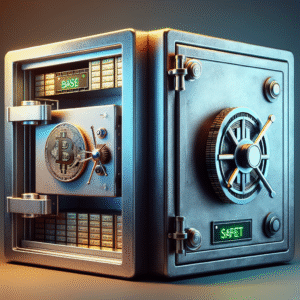DeFi vs Traditional Finance: What You Should Know
Explore the differences between DeFi and traditional finance. Learn key features, benefits, and how to navigate both financial systems effectively.
—
If you’ve been following the buzz in the finance world lately, you’ve probably heard the term ‘DeFi’, short for ‘Decentralized Finance’. This new kid on the block is shaking things up and challenging the traditional finance sector like never before. In this post, we’ll dive into DeFi vs traditional finance, highlighting their differences, benefits, and what you should know to navigate both effectively.
## What is Traditional Finance?
Traditional finance refers to the conventional financial system that we’re all familiar with – banks, credit cards, insurance companies, and the stock market. This system relies on intermediaries such as banks and government institutions to facilitate transactions, manage risks, and ensure the security of our money.
In traditional finance, these intermediaries act as the gatekeepers, controlling access to financial services. They ensure that transactions are secure and that both parties fulfill their end of the deal. In return for these services, intermediaries often charge fees.
## Introducing DeFi
On the other side of the coin, we have decentralized finance (DeFi). DeFi is a new financial system built on blockchain technology, specifically Ethereum. It aims to recreate traditional financial systems but in a decentralized, open-source, and transparent manner.
Instead of relying on intermediaries, DeFi applications use smart contracts on the blockchain. These are self-executing contracts with the terms of the agreement directly written into code, eliminating the need for a middleman.
## DeFi vs Traditional Finance: Key Differences
### Accessibility
One major difference between DeFi and traditional finance is accessibility. Traditional finance often requires proof of identity, credit history, and sometimes a certain level of wealth. DeFi, on the other hand, only requires an internet connection and a digital wallet. This opens up financial services to a global audience, including those in developing countries who may not have access to traditional banking.
### Transparency and Control
DeFi also offers greater transparency and control. Since it’s built on the blockchain, all transactions are public, verifiable, and cannot be altered. This transparency allows users to verify where their money is at all times. In addition, DeFi users can maintain full control over their assets, unlike traditional finance where banks can freeze accounts.
### Risk and Security
However, it’s not all sunshine and rainbows in the world of DeFi. While it eliminates the need for trust in institutions, it does introduce new risks. Smart contracts, while efficient, are still software that can contain bugs or be subject to hacking. Also, the volatility of the cryptocurrency market can introduce financial risk.
## Navigating Both Systems
Understanding the strengths and weaknesses of both DeFi and traditional finance can help you make informed decisions. If you appreciate the security of a regulated environment and are willing to pay for intermediary services, traditional finance might be your path. But if you value transparency, control, and global accessibility, DeFi could be worth exploring.
Remember, it’s not an ‘either/or’ choice. Many people use both systems to suit their needs. The key is to educate yourself, stay informed, and always consider your personal financial situation and risk tolerance.
## Wrapping It Up
In conclusion, DeFi and traditional finance each have their unique features and benefits. As the world continues to evolve digitally, we’ll likely see more integration between the two. After all, the ultimate goal of any financial system, be it traditional or decentralized, is to serve its users efficiently and effectively.
Tags: DeFi, Traditional Finance, Blockchain, Smart Contracts, Decentralized Finance



